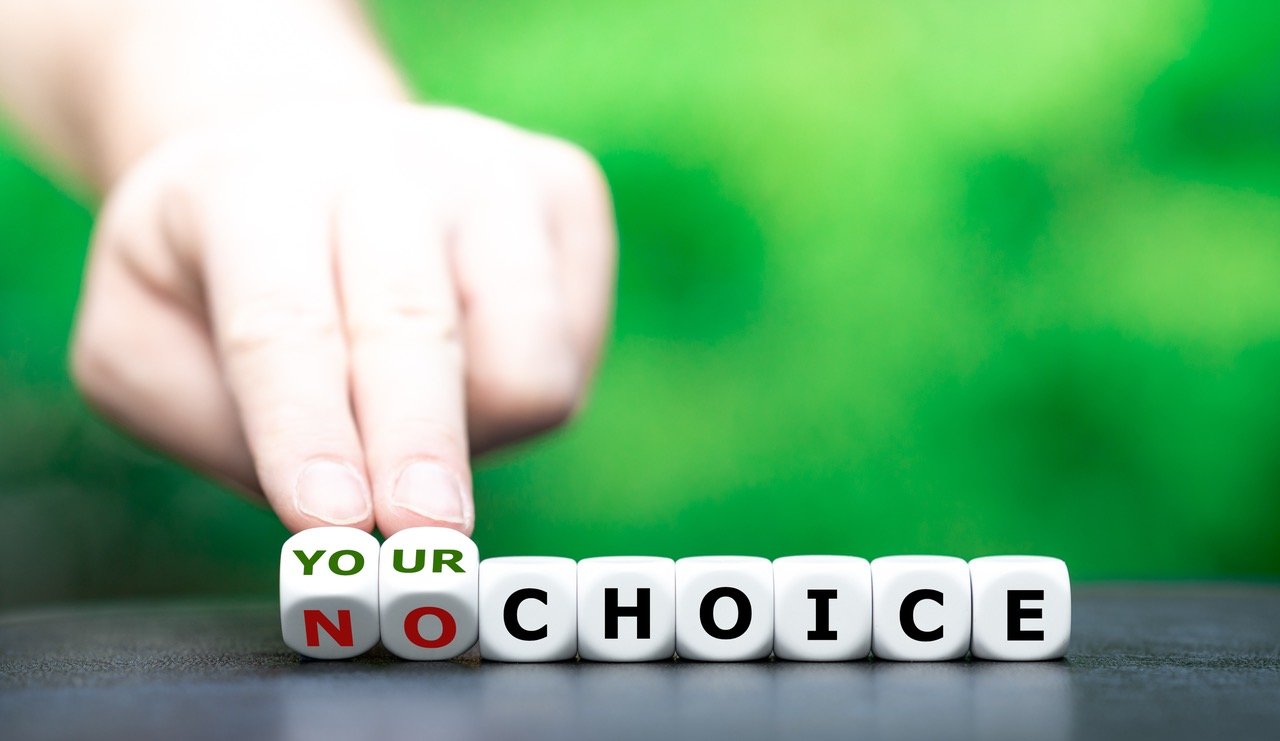Choice Mindset
Lynn Harris
5-minute read
We are our choices.
Jean-Paul Sartre
Do you ever find yourself thinking, “I have no choice”? Do you sometimes rationalize a decision by saying, “We had no choice; we had to do this”? Of course, the answer is “yes.” We all think and act this way sometimes.
However, this mindset is often a myth, and those four words – I have no choice – may be among the most disempowering phrases we can utter to ourselves and others. This article aims to help you identify when you might be operating from a victim mindset and how to empower and energize yourself and others by adopting a choice mindset.
Victim Mindset
One indication that we might be operating from a victim mindset is when we blame circumstances or others for uncomfortable or difficult choices we need to make. This is also known as a ‘poor me’ mindset because it can lead to feeling obligated, resentful, and sorry for ourselves. In effect, we position ourselves as powerless and blame others or the situation. Over time, these feelings build up and often leak out in unhelpful and unproductive behaviour.
(If your mind is already racing towards, “But surely we don’t always have a choice!” Stay with me, we’ll get there.)
Choice Mindset
A choice mindset establishes a different thinking pattern, creating more ownership, accountability, and empowerment. When faced with difficult choices, it helps to take a breath, step back and walk yourself through the following three steps:
Ground yourself in the reality of the situation.
Remember that we all experience difficulties, challenges, and tragedies – it’s not personal.
Bad things happen to everyone.
Notice any Imaginary Fears about what you think might happen in this situation.
Explore what you know to be true and what you don’t know and might be making up.
Have a desired outcome.
Decide what you want in this situation.
Explore options and the potential consequences of these options. If others are affected by
your choice, explore options and potential consequences together.
Make a choice.
Given your options and what you want, what do you/we choose to do?
Own the choice – you made it.
Examples
Given the extreme challenges life sometimes throws at us, the above examples might seem somewhat trivial. But they are typical examples of the daily choices we face and how easy it is to slip into a victim mindset and disempower ourselves. Consciously adopting a choice mindset in these situations regains some degree of empowerment and control.
When life presents more serious challenges, adopting a choice mindset is still possible.
As the author, Roy T. Bennett wrote: “You cannot control what happens to you, but you can control the way you think about all the events. You always have a choice.”
It’s an exaggeration to claim that we always have a choice. As the Alexei Navalny example illustrates, there are circumstances where we don’t have a choice over some aspects of our lives. But too often, we give away our power and agency when we claim to have no choice when, in fact, we do.
We can also disempower the people around us if, when faced with difficult decisions, we mistakenly claim that “we have no choice—we have to do this.” If you are a team member or leader, it helps to recognize that you have choices and to be open and curious about listening to and exploring different views and options. Accepting and exploring the realities and options of a situation and staying in touch with what we want empowers all of us to take back some control and make informed choices.
But what about when we don’t like the choices we face?
Primary and secondary choices
Sometimes, it helps to think of choices as primary and secondary choices, particularly when we’re making choices that we don’t particularly like.
Primary choices are about results – something we want.
Secondary choices are about actions to support achieving our primary choice.
Examples of primary and secondary choices:
It’s helpful to think of choices this way because sometimes, to achieve what we want, we must make secondary choices that we don’t like. When faced with choices we don’t like, it’s easy to fall into the trap of a victim mindset and position them as things we have to do rather than uncomfortable choices that we need to make to achieve the results we want.
Next time you think or say, “I have no choice,” take the opportunity to step back and reflect: “What’s reality? What do I want? What are the options, and what do I choose to do?”
When confronted with difficult choices, check to see if they are secondary choices that support a primary choice. Ask yourself, “How does this difficult choice support the result that I want?”
Lynn Harris is a founding Partner at Leadership Mindset Partners





